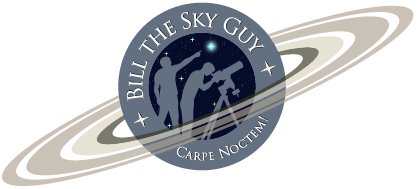RASA 11-Inch First Light
First Light Under the stars
I’ve had the Celestron eleven inch RASA telescope for a number of weeks now, getting it all configured with the “extras” like a plastic dew shield, making sure I had the proper adaptors and spacers to get the camera sensor the exact right distance from the last optical surface, velcro areas to accommodate the system manager box, dew heater control box, power supply for camera cooling.
It ends up being a lot of wires to support all the various systems on there and took quite a bit of head-scratching to try and figure out how to organize it all into a configuration that was flexible (because I move this stuff from scope to scope) but also has the basic systems in place for relatively easy setup each time, even though it doesn’t really come off like that in the video!
RASA Matta wit’ you?
So after waiting a couple weeks for good weather it was finally time to get it out under the stars and see what would happen and I thought it might be fun to make a video of it all.
Right away I ran into an issue regarding the separate “guide scope” camera which controls the telescope’s mount position with regards to the ‘marriage’ of the camera to the optics; there’s a relational ‘sweet spot’ there and I was outside it by double! I had a fix ready but it didn’t work that night because the barrel of the barlow 2x magnifying lens was so long I couldn’t get the whole camera/focuser assembly in far enough to reach focus. So I had to order a short barrel barlow for the next go ‘round which went well.
Coming Up Roses
I had had the Rosette Nebula on my ‘shot list’ for awhile now but had put off shooting it with the four inch refractor scope this season until the RASA was ready. The time was right as too much later in the year and it would be getting lower in the west and slipping into the light glow from Savannah. The Rosette is big and faint so I wanted to really ‘soak’ my camera’s detector with light and the RASA is great for that since it’s both large in diameter and fast focal length: f/2!!! Most scopes are f/5 to f/10.
I was able to take 60 2 minute exposures out of which I kept 38 for a total exposure time of 1 hr, 16 minutes which is a decent amount of light. My guiding that night was not very tight (likely due to that mismatch I was referring to) and a bunch of images were rejected because of egg-shaped stars and a few due to planes or satellites going through, passing clouds or whatnot.
But I was really happy with the data I was able to keep. Here’s the processed final image (after starting over a couple of times). I used a combination of the apps Nebulosity4 and Photoshop in arriving at this.
The Rosette Nebula with foreground open star cluster NGC 2238
Here are some photos I took of the process of getting the scope wired up and running.
















